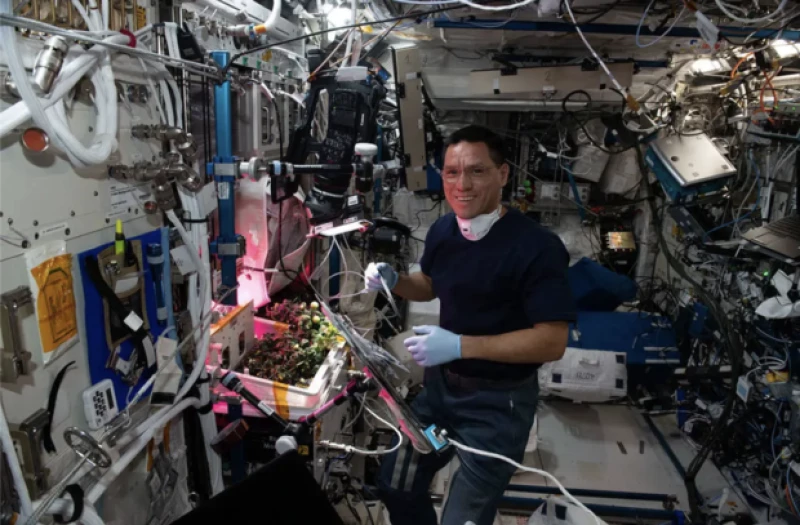It has been one of the universe's greatest mysteries — the disappearance of the first tomato grown in space.
That is, until this week, when the seven astronauts at the International Space Station announced on the 25th anniversary of the orbiter that they found the rogue fruit.
"Well, we might have found something that someone had been looking for for quite awhile," NASA astronaut Jasmin Moghbeli revealed.
The tomato was the first to be harvested and grown in space. It was grown in March by American astronaut Frank Rubio, who holds the record for longest spaceflight at 370 days.
The red robin tomato was harvested as part of a NASA experiment to grow produce in space for longer-term missions in the future. Rubio said it was a proud moment, right up until the day he lost track of the fresh, fleshy food — a commodity up in space.
Lost Tomato in Space
During a NASA interview in October, scientist Rubio recalled his experience with what he believed to be the first tomato harvested in space. He had placed the tomato in a Ziploc bag, but later took it out to show some students. Unfortunately, he misplaced the tomato and spent nearly 20 hours searching for it without success. Rubio assumed it had desiccated and may have been accidentally thrown away.

Due to the weightless environment in space, unsecured objects tend to float away. The International Space Station (ISS), which is larger than a six-bedroom house, provides numerous hiding spots for a lost tomato.
For months, there were suspicions that Rubio had actually eaten the tomato. However, he consistently denied the claim until the tomato was eventually found.
In October, Rubio jokingly expressed his hope that someone would find the tomato one day, proving that he did not consume it in space.
After the tomato was discovered, Moghbeli quickly cleared Rubio's name.
"Our good friend, Frank Rubio, who headed home, has been accused for quite some time of consuming the tomato, but we can clear his name," she stated.
Moghbeli did not provide any information regarding the location where the tomato was discovered, or its current condition. However, it is highly unlikely that it will be featured in any gourmet meal in the near future.







